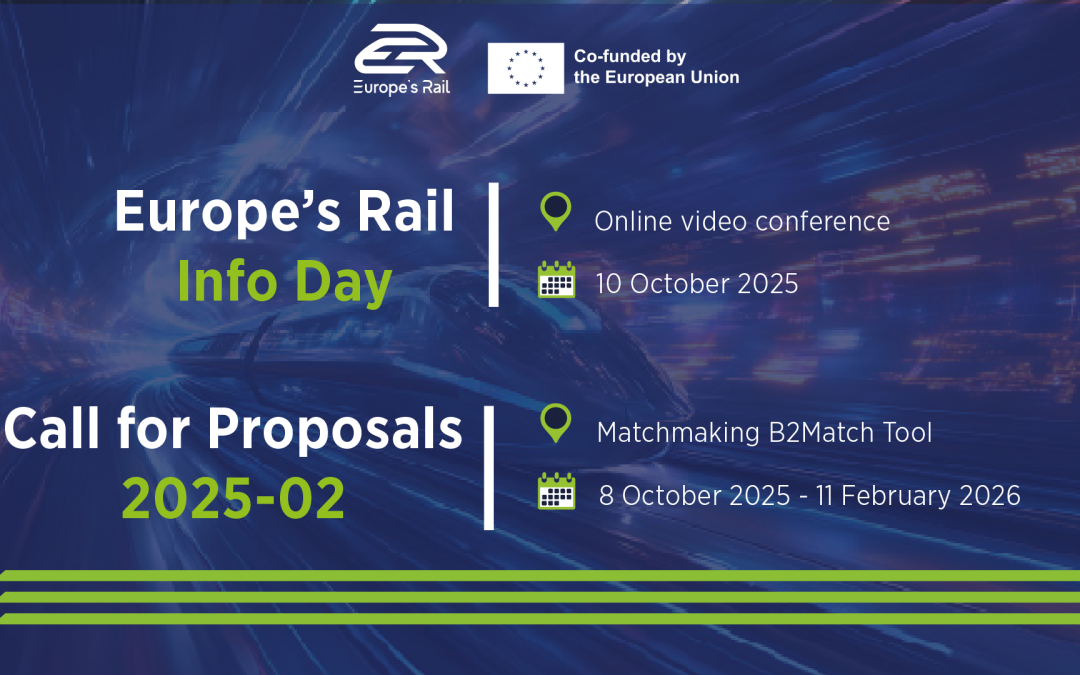We were pleased to welcome over 250 participants to the Europe’s Rail Info Day, held online on 10...

D10.1: Mapping against scope, specification of technical enablers, high-level use cases, high-level requirements, high level design for demonstrators in WPs 11-18.
The aim of FP1-MOTIONAL Flagship Project is to investigate innovative solutions for improving the rail network management planning and control, as well as multi-modal rail integration in Europe. The research and innovation outcomes of this project correspond to a number of Technical Enablers (TEs) identified in the MAWP (Multi Annual Working Plan). The document reports on the project achievements related to TEs 8 to 17 which are relevant to rail operations. This report covers the high-level requirements, alignment, design and use cases for 25 demonstrators relevant to these TEs based on a state-of-the-art analysis.
How it brings us closer to achieving better rail for Europe: FP1-Motional explores solutions for the European Traffic Management System (TMS) and Capacity Management System(CMS), for the multi-modal rail integration and Digital Enablers across all Flagship Areas that are paving the way towards the Single European Railway Area (SERA). This report contributes to this ambition by providing innovative solutions supporting more efficient rail operations at the European level.
Target audience: Rail stakeholders, Member States, Policy Makers
More information on this topic: FP1-MOTIONAL
D26.3: Final Modular Platform requirements, architecture and specification
FP2-R2DATO supports the digital transformation of rail operations by developing automation and connectivity technologies, including modular IT platforms that support flexible, interoperable computing across the railway system. In line with this goal, D26.3 presents the final specification of the Modular Platform developed under Task 26.2 of the R2DATO project. The goal is to define a computing platform that enables portability, flexibility and reuse of business logic that can be applied both on-board and wayside, regardless of their specific functions. The Modular Platforms Concept (MPC) aims to provide a computing platform (basic integrity up to SIL4) that enables the decoupling of hardware/software lifecycles and their respective update cycles. The MPC supports extensions to systems, updates, re-use of previous developments and consolidation of more software on less hardware. This deliverable builds on the work of previous projects such as Shift2Rail and other railways initiatives (e.g.RCA/OCORA) by reflecting the combined expertise of railway companies and industry partners. The document details the Modular Platform’s architecture, key requirements and three main components: Application-Level Platform Independence (ALPI), Hardware-Level Platform Independence (HLPI) and the interfaces that connect them. It also highlights how the platform can support Safe and Non-Safe functions in systems from different suppliers to run together on same COTS hardware.
How it brings us closer to achieving better rail for Europe: The Modular Platforms Concept defines a flexible computing platform that can be used across different rail systems (i.e. on-board and wayside). It aims to reduce costs, support updates and reuse to allow systems from different suppliers to run on shared hardware. By improving compatibility, update lifecycles and simplifying upgrades, it supports the development of a smarter, interoperable and more efficient rail network across Europe.
Target audience: Rail stakeholders, infrastructure managers, Member States, policy-makers
More information on this topic: FLAGSHIP PROJECT 2: R2DATO
D4.1: Requirement specifications for Wayside Assets Report
FP6-Future aims to ensure the long-term viability of the regional railway by reducing the total cost of ownership, while ensuring high service quality and operational reliability. This report outlines a set of requirements that reflect the operational and functional behaviour of three specific Wayside Assets when deployed at Regional Lines: Level Crossings, Switches and Obstacle Detection Systems. In addition to specifying these requirements, the document also includes various analysis and developments related to the Wayside Assets.
How it brings us closer to achieving better rail for Europe: It develops a concept tailored to regional railways but transferable across Europe, encompassing digitalisation, automation and the use of common and new technologies for control command and signalling, wayside components, rolling stock and customer information.
Target audience: Rail stakeholders, Member States, Policy-Makers
More information on this topic: FLAGSHIP PROJECT 6: FutuRe